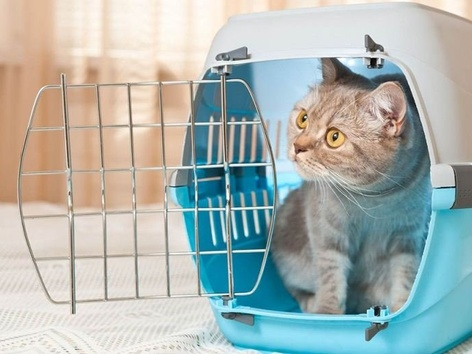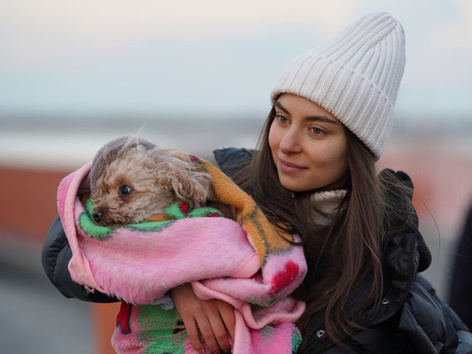
A trip abroad with a pet will be easy if you prepare the necessary documents in advance and provide comfortable conditions for your furry friend. A list of references, the estimated cost of registration and advice from experienced owners follows.
Documents for importing animals to Europe
To go on a trip to Europe, the animal must have a number of vaccinations and supporting documents:
1. It is necessary to start the preparation with chipping (identification of the animal with a microchip).
A microchip is a small chip, 2x12 mm in size, which is inserted under the animal's skin. Basic information about the animal is stored on the chip: country of origin, breed, color, nickname, vaccinations, owner's name and contact number. Information can be read using a scanner or a mobile phone that supports NFC technology.
The data of the chip must match the documents provided, be in the electronic database, the bar code of the chip must be pasted in the veterinary passport. Chipping must be carried out before vaccination against rabies or simultaneously with it.
The chipping procedure is quite simple and will not harm your pet, it is carried out in a veterinary clinic. Approximate cost 350-500 hryvnias.
2. Vaccination against rabies - vaccination should be carried out only in a veterinary clinic. It is allowed to use only those vaccines that are certified in Ukraine. Appropriate marks must be made in the veterinary passport, which must be certified by the doctor's signature and the clinic's seal.
We draw your attention to the fact that it is possible to conduct an analysis for antibodies to rabies only 30 days after the last vaccination. Therefore, vaccination must be done no earlier than 30 days before sampling and no later than a year before the study.
With the first vaccination, the animal becomes fully protected from the disease 21 days after its administration. In the case of administration of booster doses - on the day of administration.
The cost of the service starts at 150 hryvnias, depending on the selected vaccine.
3. Anti-rabies antibody titer test – a laboratory study that allows you to establish the degree of anti-rabies antibodies, i.e. find out whether your animal is protected after vaccination. If the titer of antibodies is less than the established norm, then the animal must be re-vaccinated against rabies. A number of factors influence the formation of immunity: breed, species, age, frequency of vaccination, etc.
The rabies antibody titer test is given no later than three months before the animal is taken abroad. The research is conducted in laboratories recognized by the European Union. The list of such laboratories is available on the website. The estimated cost of the study is 2,200 hryvnias.
4. European-style passport issued by state veterinary institutions. The document is filled out in English and Ukrainian and is valid until the end of the animal's life. The cost of registration is approved by a resolution of the Cabinet of Ministers of Ukraine and amounts to 51,29 UAH.
If any of the documents are missing, inform the competent person, fill out an application and, if possible, you will be allowed to go through a simplified border crossing procedure. We also advise you to familiarize yourself with the rules for crossing the border of the specific country to which you plan to travel in detail before your trip.
How to prepare an animal for a trip? Features of transportation
After preparing the documents, you should take care of transporting the animals. For those who travel by train, bus or plane, it is better to purchase a special container that meets the standards of IATA (International Air Transport Association).
Carrying bags are recommended for short trips or when traveling in public transport.
Choose all means of transport, taking into account the size and weight of the animal. Also, before the trip, we advise you to spend some time so that your pet gets used to the new container.
Those who travel in their own car can transport an animal:
• in a container;
• on the back seat, preferably covered with a car hammock;
• in the trunk, using a car mat.
The main thing is that there are no objects near the animal that can injure it. It is also worth taking care of safety while driving. To prevent the animal from jumping over to the driver while driving, buy a special net in the car interior.
Before leaving, gather all the necessary things for the trip: collar, leash, muzzle, first aid kit, bowls, food and water. Consult a veterinarian about treating the animal for ticks and fleas. If you know your destination, search for information about the nearest veterinary clinics.
Before the trip, it is better not to feed the animal, but only to let it drink water. If you know that your pet can become motion sickness, consult a veterinarian about medications. During the trip, sometimes let the animal warm up and offer water more often. A favorite toy or treats will contribute to the good mood of the furry one during the trip.
We will remind you, that we previously wrote about the rules for entering Turkey with a pet. Details at the link.
Recommended articles
1 min
For refugees




